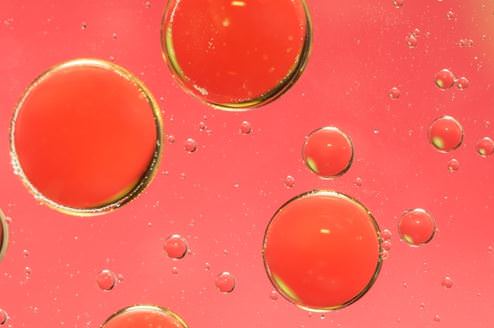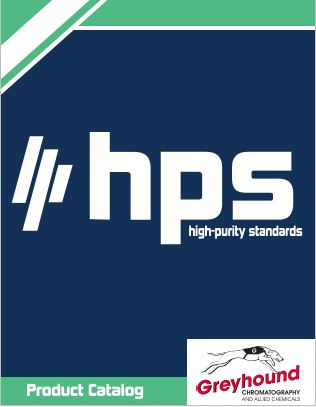Are Chemical Emulsifiers Making Humans Fat?
Emulsions are used by people in the U.S. and around the world every day. From personal care products and vaccines to foods and drinks, these mixtures are commonplace in modern society.
One reason that emulsions, or mixtures of one substance dispersed through a second substance where neither dissolves into the other, have been made possible is largely through chemical emulsifiers. These substances make it possible to mix foods such as ice cream or salad dressing without having them separate.
However, research recently published in the journal Nature explained that dietary emulsifiers may be responsible poor gut health and related to obesity.
Emulsifiers harm gut bacteria
The team of scientists from different universities and research centers studied the effects of two chemical emulsifiers – Polysorbate-80 and carboxymethylcellusoe – on mice. The U.S. Food and Drug Administration has rated both of these chemicals as nontoxic and noncarcenogenic but with no further safety distinctions.
When the mice were given the artificial emulsifiers in their water bottles, they developed gut health problems and became overweight. The scientists suspect that the emulsifiers affected the normal gut bacteria that the mice had and in some cases, moved the bacteria from their proper place to the behind the protective layer of gut mucus. The study connected these emulsifiers with obesity and related conditions like Type-2 diabetes and inflammatory bowel disease.
One reason that researchers embarked on this experiment was to see the affect of these chemicals and what roles they might have played in the rise of certain illnesses and health conditions over the past 60 years.
"The dramatic increase in these diseases has occurred despite consistent human genetics, suggesting a pivotal role for an environmental factor," study coauthor Benoit Chassaing said in a statement. "Food interacts intimately with the microbiota, so we considered what modern additions to the food supply might possibly make gut bacteria more pro-inflammatory."
Forbes magazine reported that the researchers may soon do a comparable experiment related to lecithin, a naturally occurring emulsifier that's found in eggs and helps you create homemade mayonnaise. As people have avoided foods higher in fats, these artificial chemical emulsifiers have become more popular in diets rather than the natural emulsifiers in higher fat foods.
The researchers explained that they don't think that the emulsifiers are the underlying cause of obesity and many modern health concerns, but rather a contributing factor found in people who eat excessive amounts of processed foods.
A new form of emulsion
There's more than one way to create an emulsion. Instead of using chemical emulsifiers to make a simple emulsion, researchers at the Massachusetts Institute of Technology have developed new techniques using temperature and surfactants to create complex emulsions with multiple layers within a single mixture.
These findings have promising uses outside of the food industry, like for complex and targeted drug delivery and cleaning up chemical spills and pollution. The work was published in the journal Nature and funded by Eni-MIT Alliance Solar Frontiers Program, the U.S. Army Research Laboratory, the U.S. Army Research Office, and the National Institutes of Health. The MIT scientists described their method as a two-step approach.
First, they mixed together two oils that only combined at a high temperature. They used hexane and perfluorohexane – chemically similar substances. These were mixed together in water to form an emulsion then cooled to create a complex emulsion.
The second step used surfactants, like the chemicals used in soap or shampoo. Surfactants work to adjust the surface tension of substances. In soap, they to allow the water to wash the dirt away, and in this experiment, the surfactants were used to manipulate the tension between the oils and the water. The result is a complex emulsion that scientists can maneuver to do exactly what they want. They can have droplets where each hemisphere is made of different oils or droplets where one oil is inside the other.
The researchers have already filed two patents, and the next step is to develop surfactants in the mixture that can interact with specific proteins or environmental factors to release the desired substances as needed only when they're in the right place, making them ideal for drug delivery or diagnostic medical purposes.
"By playing with the relative quantities of these two surfactants, we were able to directly control the relative strengths of the two interfacial tensions," graduate student Vishnu Sresht explained in a statement. "And the interplay between that, depending on which interfacial tension is larger and which is smaller, forces the droplet to take a specific configuration … You can use these emulsions for delivery applications, cleanup applications, anything where you need to protect something, shield something, or pick up and deliver something. It's like a package that you can open and close at will."
These new complex emulsions can be made sensitive to light or certain acidities. But one of the biggest reasons this new method improves over previous methods of creating complex emulsions is that it allows scientists to create large scale emulsions quickly.
CONTACT US
Tel: +44 (0) 151 649 4000
Email: marketing@greyhoundchrom.com
FOLLOW US
YOU MAY ALSO BE INTERESTED IN OUR NEWSLETTER
About the Author
Susan Massie, Sales & Marketing Director, Greyhound Chromatography and Allied Chemicals Email: sue@greyhoundchrom.com
Susan Massie is the Sales & Marketing Director for Greyhound Chromatography and Allied Chemicals, affectionately known as 'Greyhound' in our scientific community. Greyhound was founded by Susan's husband Paul Massie more than 40 years ago, Susan hasn't been in the business for all of that time but has been involved with Greyhound for over 17 years. Greyhound continues to grow, expanding into new markets and taking on the challenges of our ever changing environment. It's heartwarming to witness the world waking up to the fact that we are damaging our planet on a daily basis. Every action we take has a direct effect on our planet and the world we leave behind for future generations. Susan is passionate about climate change and is happy to work in an industry that can have a direct effect on reducing the impact of our actions on the environment. All of the team at Greyhound take our responsibilities very seriously, the products that we supply are used by the world's leading scientists and chemists as they endeavour to monitor and repair the environment. All is not lost, if we all take responsibility for our actions, from reducing our waste and reusing or recycling our material collateral we can make a difference. The internet is full of useful advice and guidance, Susan is proud to contribute to that wealth of knowledge whenever she can.
Greyhound prides itself on personal service which provides prompt, efficient, cost-effective, safe delivery of all products. Greyhound provides technical advice and distribution of Certified Reference Standards and Materials, Laboratory Consumables, Solvents and Reagents across all scientific disciplines. Greyhound Chromatography offers over 1 Million products from its UK warehouse. The team at Greyhound are proud to support the work of the world's leading scientists and chemists as they challenge the abuse of our planet and try to make a difference to the world we leave behind for our ancestors.
You can view Susan's Linked In Profile here https://www.linkedin.com/in/susan-massie-79ab4121/


















